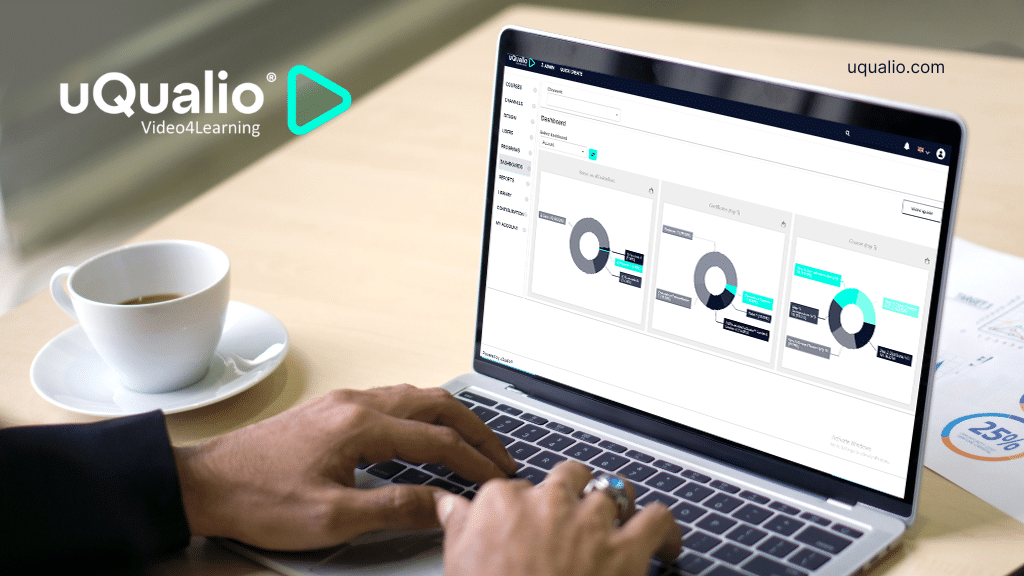When it comes to fostering customer education success, it’s essential to track the right metrics. These indicators not only measure the effectiveness of your customer education program but also provide insights into how to enhance customer learning experiences. If you’re using a video training platform, understanding these metrics can lead to improved product adoption, reduced customer churn, and increased customer lifetime value. Let’s dive into the key metrics that will help you manage and optimize your customer education efforts.
As we explore these metrics, remember that each one serves as a compass, guiding your strategy towards greater customer engagement and satisfaction. By leveraging tools like microlearning, gamification, and micro-credentials, you can create a dynamic and impactful customer training platform that resonates with your audience. Now, let’s take a closer look at the specific metrics that will help you gauge the success of your customer education program.
Video Completion Rate
The video completion rate is a critical metric for any video eLearning software solution. It indicates the percentage of viewers who watch a video from start to finish. High completion rates suggest that your content is engaging and valuable to your customers. To boost this metric:
- Keep videos concise and focused on key takeaways.
- Use storytelling and real-world examples to maintain interest.
- Implement interactive elements, such as quizzes or tests.
Monitoring video completion rates can also help identify where customers may lose interest, allowing you to refine and improve your content. For instance, if a particular video module has a high drop-off rate, it may need to be reworked to be more engaging or informative.
Average Watch Time
Average watch time measures how long customers are engaged with a video on average. This metric provides insight into the overall effectiveness of your video content. A high average watch time typically correlates with high customer understanding, engagement, and interest. To maximize average watch time:
- Ensure video content is relevant and directly addresses customer needs.
- Use high-quality visuals and clear audio to enhance the viewing experience.
- Integrate microlearning techniques to deliver content in digestible segments.
By analyzing average watch time, you can fine-tune the pacing of your videos and ensure that they are neither too long nor too short, keeping your audience’s attention from beginning to end.
Quiz Participation Rate
Quiz participation rate is a measure of how many users engage with quizzes embedded in your customer training platform. Quizzes are a form of gamification that can significantly enhance learning retention. To encourage quiz participation:
- Design quizzes that are challenging yet achievable to motivate learners.
- Provide immediate feedback to help users learn from their mistakes.
- Offer incentives, such as micro-credentials or badges, for high scores.
Tracking quiz participation rates can help you understand how interactive your course is, and whether or not the quizzes are effectively reinforcing the learning material. A low participation rate may indicate that the quizzes are not well-integrated or that users do not find them valuable.
Module Completion Rate
Module completion rate is a straightforward yet powerful indicator of customer education success. It reflects the percentage of users who complete each module within your customer training platform. High module completion rates suggest that your content is compelling and that users are motivated to learn. To improve this metric:
- Structure modules with clear objectives and outcomes.
- Use a mix of content types, such as videos and supporting files.
- Implement progress tracking to encourage users to continue their learning journey.
Analyzing module completion rates can also help you identify any content that may be too difficult or not engaging enough, prompting you to make necessary adjustments.
User Satisfaction Score
User satisfaction score, often measured by surveys or a net promoter score (NPS), is a direct reflection of how users perceive the value of your customer education program. A high user satisfaction score indicates that your program is meeting or exceeding customer expectations. To maintain or improve this score:
- Regularly collect feedback to understand user needs and preferences.
- Act on feedback to make continuous improvements to the program.
- Ensure that customer support is readily available to assist with any issues.
Remember, a satisfied customer is more likely to become a loyal advocate for your brand, so keeping a pulse on user satisfaction is crucial for long-term success.
Retention Rate
Retention rate measures how well your customer education program keeps users engaged over time. It’s a vital metric for assessing the long-term impact of your training efforts on customer retention. A high retention rate often correlates with increased product adoption and customer loyalty. To enhance retention:
- Update content regularly to keep it fresh and relevant.
- Use data analytics to personalize the learning experience for each user.
- Engage users with follow-up courses and advanced learning opportunities.
By monitoring retention rates, you can gauge the stickiness of your program and identify opportunities to keep users coming back for more.
Technical Performance Metrics
Technical performance metrics are essential for ensuring that your video eLearning platform operates smoothly. These metrics include load times, downtime, and error rates. A seamless technical experience is crucial for maintaining user engagement and satisfaction. To optimize technical performance:
- Regularly test and update the platform to minimize technical issues.
- Ensure that your hosting solution can handle high traffic volumes.
- Provide clear troubleshooting guides and responsive technical support.
Keeping an eye on technical performance metrics helps you provide a reliable and efficient learning environment, which is key to keeping users focused on the content rather than technical difficulties.
Conversion Rate
Conversion rate is a critical metric for measuring how effectively your customer education program turns prospects into customers or leads into active users. It reflects the percentage of users who take a desired action after engaging with your training content. To improve conversion rates:
- Align educational video content with your sales funnel to guide users towards conversion.
- Highlight the benefits of your product or service within the educational material.
- Offer special promotions or discounts to users completing the training.
By tracking conversion rates, you can assess the direct impact of your customer education efforts on your bottom line and adjust your strategy to maximize ROI.
Conclusion
Managing your customer education program effectively requires a keen understanding of various metrics. From video completion rates to user satisfaction scores, each metric offers valuable insights into how your customer education program is performing and where there’s room for improvement. By focusing on these key performance indicators, you can ensure that your customer training platform delivers the best possible learning experience, leading to higher customer satisfaction, retention, and ultimately, a stronger bottom line.
Remember, the goal of customer education is not just to inform but to transform. By leveraging the power of a video eLearning platform like uQualio, you can create engaging, impactful training that resonates with your audience and drives measurable results. Keep these metrics in mind, and you’ll be well on your way to customer education success.
Achieve Effective & Affordable Video Training
– uQualio is an award-winning, easy-to-use, all-in-one NextGen LMS software for any types of online video training.












